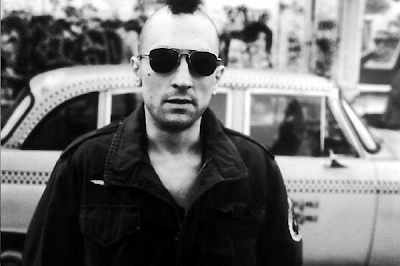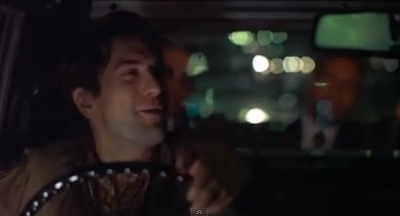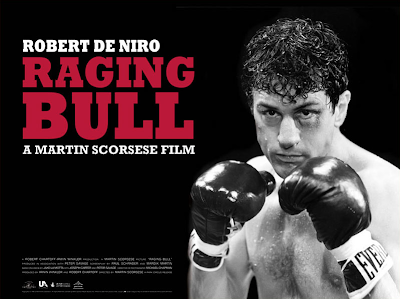













The four areas in which continuity has intensified in Hollywood Cinema are shot length, lens choice, close framing, and a free-ranging camera.
What I find fascinating is the gradually decreasing average shot length. As the shots became shorter and cuts became more frequent, films became more "intense". This can be considered an evolution as far as technological advances are concerned, but has film lost the flavor it once had with its once long takes? There is a socioeconomic influence on shot lengths' impact on how action-driven films are today. An appropriate analogy would be a car in the 1920s versus a car today. In my opinion, much like how all of the technological advances made in the world as a whole embodied inventions making communication and transportation much more quick and efficient, the film world grasped on to such changes to try to keep up with its rapidly moving audiences. Another factor, as Bordwell states, is that "when an independent goes mainstream, the cutting is likely to accelerate." This basically implies that everyone in the audiecne wants the same thing--a fast pace. Out of this socioeconomic factor comes the idea that in order to be a successful filmmaker independents must comply to the invisible boundaries set by mainstream filmmakers. Ultimately, technology is a driving force in decreasing average shot lengths because we as an audience (unless you're a sucker for old films) are accustomed to a more fast-paced life.














Treatment: Untitled
A man wakes to the sound of his alarm clock. There is a lanyard name tag beside the clock that reads: Wondercon" and then "Albert Randalf." Albert sits up and stares out the window with an appearance of hopelessness, purposelessness, and just plain boredom. The birds chirp endlessly in the background. Albert glances longingly at his portraits of Gandalf, Dumbledore, and an interpretation of Merlin, then an unfinished Dungeons and Dragons game on the nearby table, a battered copy of the Lord of the Rings (The Fellowship of the Ring) lying open on the floor, and the first Harry Potter movie just by the DVD player. Albert stares back out the window, and then lies back down.
Hours later, judging by the alarm clock, Albert is just leaving his cramped, dim apartment. He trudges outside and down the stairs to the loud city below, a frown on his face. He walks along slowly, people on bikes peddling by, people in tracksuits jogging around him, actually heading toward something.
There in the window was a sight like no other--a wizard's pointy hat sitting in the window of an old magic shop. Albert's eyes became wide at the 50% off sign just beside the hat.
Albert heads inside the shop and goes to the window. "Authentic, that is. That hat is said to belong to my distant ancestor, a well-known wizard of the 11th century," said a voice. Albert turned around, hat in hand, smiling. "How much?" he asks. "20 dollars after sale," said a small bearded man with a similar pointy hat and flowing robes.
Albert's face turns to sadness as he realizes in a flashback that he still can't afford the hat as we return to the eviction sign and a frustrated Albert going through bills in the dim apartment. We return to Albert staring at the hat and go into another flashback highlighting Albert focussing only on the screen as he watches Gandalf casting Saruman out of the good King Theoden in The Lord of the Rings, popcorn in hand, but not daring to move as he watches in awe. We see Albert crying as he reads Harry Potter and the Deathly Hallows. We see Albert chuckling and moving one of his players in his one-man D&D game. Lastly, we see Albert washing his framed portraits of his favorite wizard with Windex.
Albert comes out of the flashback.
"I don't have the money, but I'll do anything for that hat," he said with emotion.
"Hmm," said the shopkeeper, stroking his beard thoughtfully toward Albert. The shopkeeper glances towards a dusty D&D game board not far away. We go into a flashback of all the times the shopkeeper won (exclaiming, "Ha!" every time) against himself. He turns back to Albert, "I'll play you for it."
Albert squints his eyes at the shopkeeper, and the shopkeeper does the same. We see Albert again, "Deal."
The shopkeeper grabs his Windex from behind the counter and cleans off the dusty board. Albert half smiles at this. The two sit down, a clock in the background.
A few hours pass, judging by the clock in the background and we see the two slowly nearing the end of the game. We see the two placing their characters in slow motion, Albert chuckling at a good move, and the shopkeeper exclaiming, "Ha!"
One hour later, we see Albert make a move in slow motion and chuckle. The shopkeeper stares back and forth, mouth open, at the board and at Albert. Albert the victorious puts his hand out over the board for the shopkeeper to shake it. The shopkeeper smiles and shakes it, "Marlin Dumbledon, by the way."
"Pleased to meetcha," Albert replied. The shopkeeper handed him the hat. "Oh, and good game," Albert added. The shopkeeper, still smiling, nodded.
Albert was headed for the door, when, as he pushed the door open, Marlin called, "Say, you said you're having money troubles, eh." Albert, turned to him and nodded, frowning. "And, well, you seem to know a lot about this kind of stuff", he added a little more quietly to himself. "I've been manning this shop by myself for years now. I could really use a partner." Albert chuckled and put his new hat on. He came back inside and said, "Sure would." Marlin walked him over to the counter and started enthusiastically explaining how to determine between a fraud wizard hat and the real thing, which types of customers to watch out for, how to organize the bookshelf of wizarding history and fantasy novels, etc., with Albert nodding all the way.











